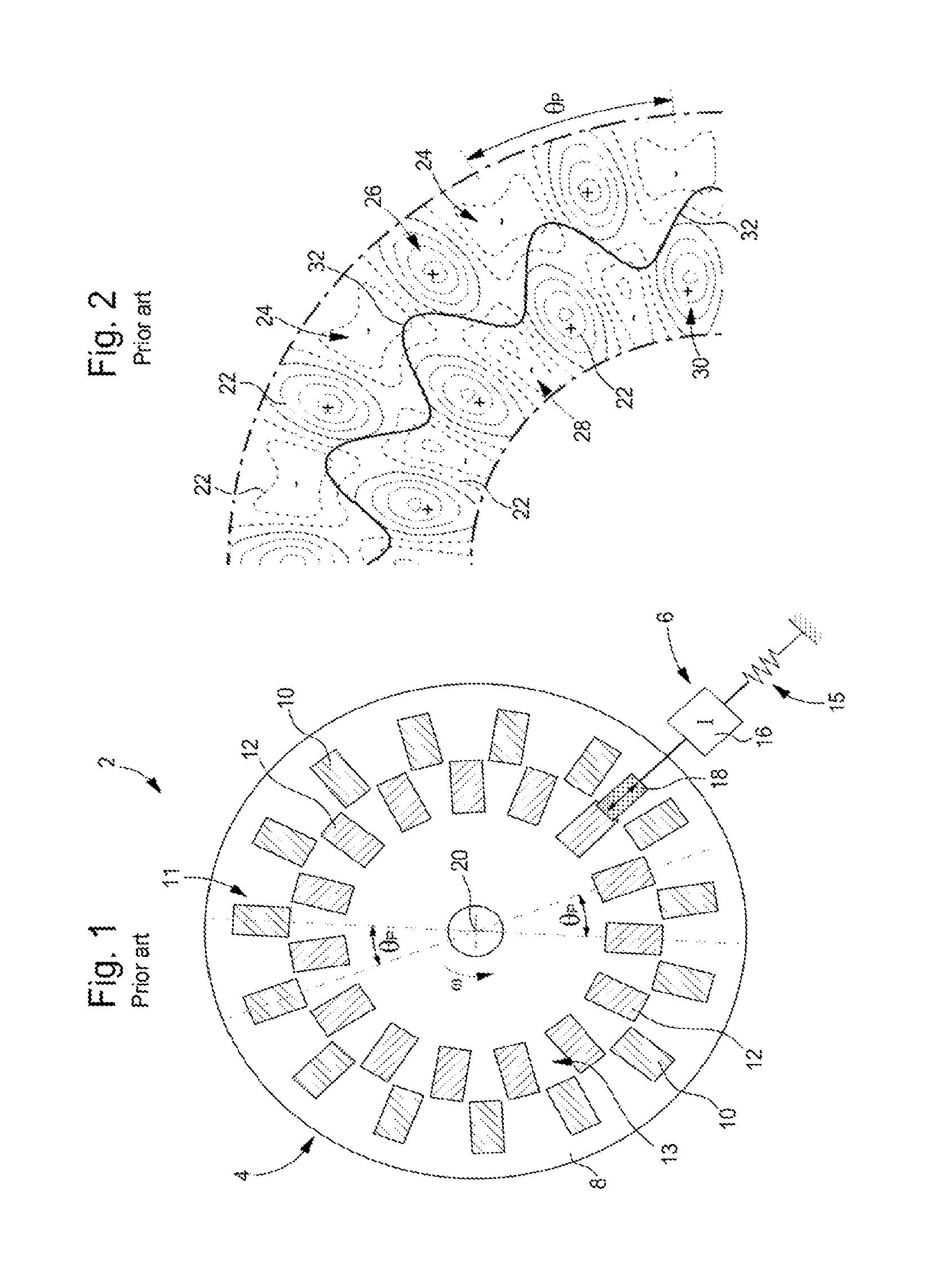Device intended to control the angular speed of a train in a timepiece movement and including a magnetic escapement
- Summary
- Abstract
- Description
- Claims
- Application Information
AI Technical Summary
Benefits of technology
Problems solved by technology
Method used
Image
Examples
third embodiment
[0124] the regulating device 180 of FIG. 15 comprises a magnetic escapement mobile 182, with two concentric magnetic tracks 86A and 186, and a resonator 184. The first track 86A has already been described and the second track 186 made up of a plurality of magnets 188 is similar thereto, but with a smaller diameter. The potential magnetic energy of the oscillator 180 varies angularly along said second track with the same angular period θP and in a similar way to the variation of the first track. The first and second magnetic tracks have an angular displacement equal to half the angular period. The resonator 184 comprises a coupling element with an active end portion 190 formed by a magnet arranged in repulsion and defining in its general plane a tapered potential magnetic energy accumulation zone 190A. Said portion 190 is arranged in a non-magnetic support 192 fixed to the horological movement by two spring rods 193 and 194 allowing the support 192 to oscillate. The active end portio...
fourth embodiment
[0125] the regulating device 200 of FIG. 16 comprises a magnetic escapement mobile 202 with a radially extended magnetic track 204, as described in the first main embodiment. The magnets 206 of said track are tapered with the two sides parallel in a tangential direction relative to the axis of rotation 20. The oscillator 200 also comprises a resonator 210 of the same type as the one in FIG. 14, said resonator also comprising two coupling elements carried by a balance wheel 212 made of a non-magnetic material, but is distinguished therefrom by the fact that the corresponding two active end portions 46A and 46B are radially narrow relative to the magnets 206 in the rest position of the coupling elements (position shown). The two portions 46A and 46B are situated on both sides of a straight line perpendicular to their longitudinal direction and substantially radial relative to the axis of rotation 20 of the escapement mobile. They both extend relative to said axis over an angular dista...
fifth embodiment
[0126]With reference to FIGS. 17 and 18, the invention will be described below. The regulating device 220 comprises a first magnetic escapement wheel 222 and a second magnetic escapement wheel 224 which are identical and are arranged in the same general plane. Said two escapement wheels form two magnetic structures each defining a radially narrow magnetic track 86A with a plurality of magnets 103. The potential magnetic energy of the oscillator therefore varies angularly in a similar way along said two tracks 86A. The two escapement wheels mesh directly with one another via their respective teeth 226 and 228. The two magnetic tracks are coupled to the same coupling element 234 of the resonator 230 which also comprise a T-shaped non-magnetic support 232 and two spring rods 233A, 233B at the two ends of the transverse bar of said support. The magnet 234 is arranged at the free end of the central bar of the support. The spring rods are arranged such that the magnet 234 can oscillate al...
PUM
 Login to View More
Login to View More Abstract
Description
Claims
Application Information
 Login to View More
Login to View More - R&D
- Intellectual Property
- Life Sciences
- Materials
- Tech Scout
- Unparalleled Data Quality
- Higher Quality Content
- 60% Fewer Hallucinations
Browse by: Latest US Patents, China's latest patents, Technical Efficacy Thesaurus, Application Domain, Technology Topic, Popular Technical Reports.
© 2025 PatSnap. All rights reserved.Legal|Privacy policy|Modern Slavery Act Transparency Statement|Sitemap|About US| Contact US: help@patsnap.com



